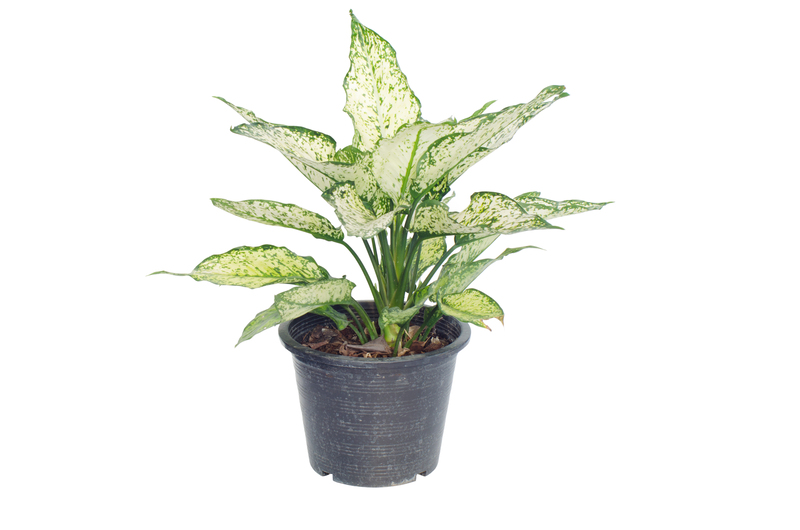Adapting to Nature's Breath: Garden Solutions for Windy Climates
Posted on 03/09/2025
Adapting to Nature's Breath: Garden Solutions for Windy Climates
Gardening in windy climates presents unique challenges and opportunities. Winds can reduce plant growth, dry out soils, break branches, and wreak havoc on your garden design. However, these natural breezes also bring benefits such as pest reduction and pollen distribution. In this comprehensive guide, we'll explore garden solutions for windy climates, offering practical advice, plant recommendations, and design strategies to help your landscape thrive despite nature's gusty breath.
Understanding the Impact of Wind on Gardens
Before you can adapt your garden, it's essential to understand how wind affects your plants and soil. Windy conditions can:
- Desiccate Leaves: Strong winds increase water loss through evaporation, causing wilting and browning.
- Damage Plants: Gusts can break stems, topple plants, and shred leaves.
- Disrupt Pollination: Excess wind may dislodge pollen or deter pollinators.
- Cause Soil Erosion: Wind movement lifts topsoil, stealing precious nutrients.
- Spread Diseases: Wind can carry pathogens and spread fungal spores.
To create a wind-adapted garden, gardeners need proactive design principles and plant choices tailored to withstand and even harness breezy conditions.

Garden Planning in Windy Areas
1. Assess Your Wind Exposure
Every site is unique. Start by observing:
- Wind Direction: Is it seasonal or constant? Where is it strongest?
- Wind Speed: Is it a gentle breeze or frequent gales?
- Site Features: Fences, hills, neighboring buildings, and water bodies can all influence local wind patterns.
2. Garden Layout for Wind Protection
Thoughtful design is vital for gardening in breezy climates. Consider these strategies:
- Create Windbreaks: Trees and shrubs, fences, or walls on the windward side reduce wind speed and protect sensitive plants.
- Layer Plantings: Position tallest, densest species furthest upwind; plant medium and low plants in stages downwind.
- Flexible Structures: Use netted screens or trellis fences for semi-permeable barriers that diffuse wind without creating turbulence.
- Microclimates: Place delicate or heat-loving plants behind wind barriers to create calmer "niches."
Windbreak Solutions: Shelter from Nature's Breath
Living Windbreaks
Hedges, rows of trees, or tall shrubs are excellent solutions for gardens exposed to wind. They filter and slow wind, reduce evaporation, and provide wildlife habitats. When establishing a living windbreak:
- Plant in Staggered Rows: Two or more rows work better than a single line.
- Mix Species: Blend deciduous and evergreen for year-round protection.
- Allow Semi-Permeability: Densest windbreaks aren't always best; allow some wind through to reduce turbulence.
Examples of wind-tolerant species: Sea buckthorn, privet, pine, hawthorn, holly, and elderberry.
Shelterbelts and Natural Barriers
In larger spaces, plant shelterbelts--multi-species lines of trees and shrubs--with groundcovers below to anchor soil. For smaller gardens, use natural features like berms or rocky outcrops to break airflow.
Fences and Screens
Not every garden allows for trees. Hardscape wind barriers like latticed fences, woven hazel panels, or reed screens provide immediate, controllable protection.
- Avoid Solid Fences: These can create wind tunnels and turbulence on the leeward side.
- Opt for Porous Materials: Allowing some air movement is key to success.
- Consider Height and Anchoring: Ensure your structures are secure and tall enough to protect your garden's most vulnerable zones.
Plant Selection: Nature's Wind-Resistant Allies
Best Plants for Windy Gardens
When selecting plants for windy climates, look for characteristics such as:
- Low, Mounding Forms: Plants that hug the ground are less likely to break or topple.
- Flexible Stems: Grasses and supple shrubs bend rather than snap.
- Small, Tough Leaves: Thicker or waxy foliage withstands wind and reduces water loss (think lavender or rosemary).
- Deep, Resilient Roots: Secure plants against erosion and uprooting.
- Evergreen Habits: Offer year-round structure and wind protection.
Wind-Tough Plant Species
- Lavender--Fragrant, drought- and wind-resistant, perfect for borders.
- Juniper--Varieties from ground cover to upright forms, all tough as nails.
- Russian Sage (Perovskia)--Willowy and sturdy, blooms beautifully amid breezes.
- Quaking Grass (Briza Media)--Moves gracefully with the wind, ideal for movement and texture.
- New Zealand Flax (Phormium)--Striking architectural leaves withstand coastal gales.
- Bay Laurel--Robust, aromatic, and wind-tolerant shrub or small tree.
- Cotoneaster--Low-growing, dense, and works beautifully on slopes or as hedging.
- Rockrose (Cistus)--Mediterranean favorite with tough, wind-proof leaves and floral displays.
For vegetable gardens in windy areas, try root vegetables, peas, beans, Swiss chard, kale, and cabbages--plants with sturdy, low-set leaves.
Smart Soil Management for Windy Gardens
Wind dries out and erodes soil, which can undermine root stability. Essential tips for soil care in breezy gardens:
- Mulch Generously: Wood chips, straw, or gravel mulch reduce evaporation and shield topsoil.
- Plant Groundcovers: Creeping thyme, clover, or stonecrop protect and anchor soil between larger plants.
- Build Up Raised Beds: Reduce direct wind contact and provide excellent drainage.
- Water Deeply, Less Often: Encourage plants to develop deeper, wind-resistant roots.
Maintenance Practices for Windy Landscapes
Staking and Support
Young trees and delicate plants may require stakes or supports until established. Remember:
- Use Flexible Ties: Allow some movement for stronger trunk development.
- Remove Supports Over Time: Over-reliance weakens natural growth.
- Regular Checks: Inspect and reposition stakes as plants grow.
Pruning for Resilience
Prune trees and shrubs for wind filtration and form:
- Thin Canopies: Allow wind to pass through instead of catching in a dense mass.
- Remove Damaged or Crossing Branches: Prevent rubbing and breakage in strong gusts.
- Shape Multi-Stemmed Trees: These are less likely to snap than a single trunk.
Design Ideas for Wind-Exposed Gardens
Use Movement to Your Advantage
Wind adds dynamic energy. Choose ornamental grasses, bamboo, or flexible willows to create planting schemes that dance on the breeze, adding sensory pleasure to your space.
Coastal and Exposed Style Inspiration
Many coastal gardens thrive in constant wind. Embrace their design motifs:
- Driftwood, pebbles, and shells: Add texture and wind-proof decoration.
- Low, mounding, and sprawling plants: Intermix evergreen and perennial layers.
- Wind chimes and kinetic sculptures: Turn wind from a nuisance to a feature.
Innovative Garden Solutions for Extreme Wind
In especially windy sites--hilltops, plains, coastlines--consider extra measures:
- Sunken Gardens: Level down planting beds, offering natural wind shelter.
- Gabion Walls and Stone Edges: These sturdy features slow winds and create visual drama.
- Temporary Shade Structures: Mesh tunnels or cloches can protect seedlings or sensitive crops during their most vulnerable stages.
Common Mistakes to Avoid in Wind-Affected Gardens
- Ignoring Wind Direction: Always plan windbreaks and sensitive plant placements according to prevailing breezes.
- Relying Solely on Solid Structures: Solid walls can cause wind eddies that damage plants--combine living and hard barriers.
- Over-Watering: Wind may dry the soil surface while roots stay wet--always check before watering.
- Neglecting Mulch: Bare soil is quickly lost to wind and erosion.
- Planting Tall, Weak-Limbed Species: Choose robust plants or provide support in exposed locations.
Gardening with the Wind: Embracing Nature's Breath
Ultimately, adapting your garden to windy climates isn't just about protection--it's about working with natural forces for a resilient, beautiful landscape. Wind needn't be your enemy! Instead, let it guide garden structure, plant choices, and your sense of place.
- Plan windbreaks and permeable screens to create sheltered microclimates.
- Choose wind-resistant plants with tough foliage and strong roots.
- Mulch and support soil to counter erosion and dehydration.
- Celebrate movement and texture--allow ornamental species to embody the very breath of nature.

Frequently Asked Questions about Windy Garden Solutions
Q: What are the best quick fixes for sudden wind damage?
A: Prune broken stems cleanly, support limp or bent plants gently, and water deeply to help roots recover. Apply fresh mulch to exposed soil and check windbreaks for gaps or damage.
Q: Can I grow fruit and vegetables in windy areas?
A: Absolutely! Look for wind-tolerant vegetables with low profiles--root crops, brassicas, and bush beans--and support fruit trees with staking and wind filtration.
Q: How tall should my windbreak be?
A: A windbreak protects an area about ten times its height downwind. For a 2-meter-high hedge, expect shelter for up to 20 meters behind it. Adjust placement for site and needs.
Q: Will windbreaks take years to mature?
A: Fast-growing species like willow, elder, or privet establish quickly. Temporary structures like reed screens or netting can be used while permanent planting develops.
Q: Are there ornamental plants that thrive on wind?
A: Yes! Ornamental grasses, phormiums, echinacea, and many herbs love movement and can even become highlights in an exposed garden.
Conclusion: Thriving Gardens in Windy Climates
Learning to adapt your garden to wind transforms what might seem like a challenge into a unique design opportunity. With the right layout, materials, and resilient plantings, your garden can become a sanctuary--even in nature's breathiest landscapes. Harness the wind, protect your plants, and discover the beauty and vigor of a wind-adapted garden that thrives all year long.
Adapting to windy conditions is not just about surviving--but about flourishing in harmony with nature's energy. Let your garden breathe--and dance--with the wind!

